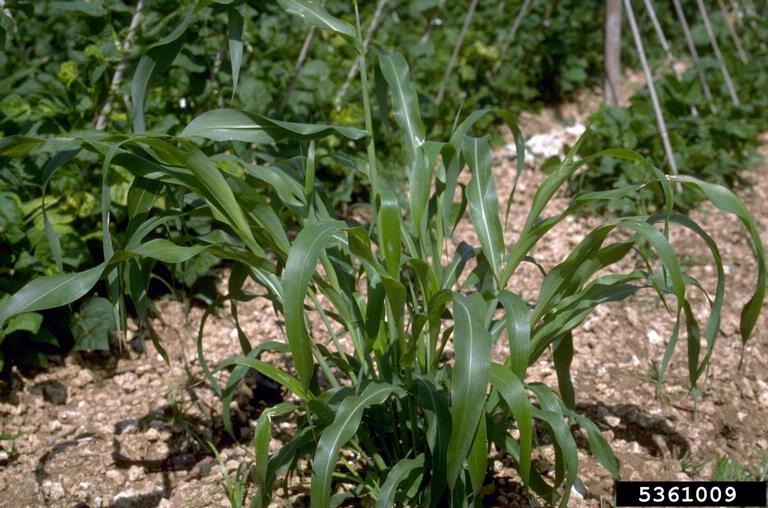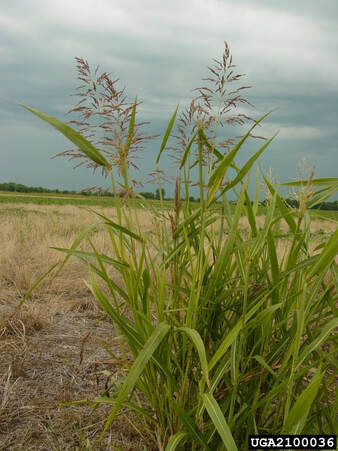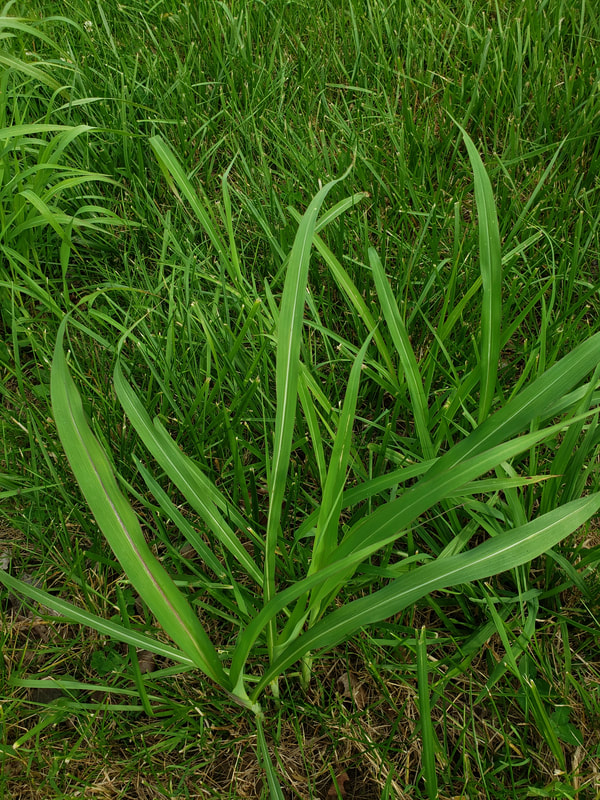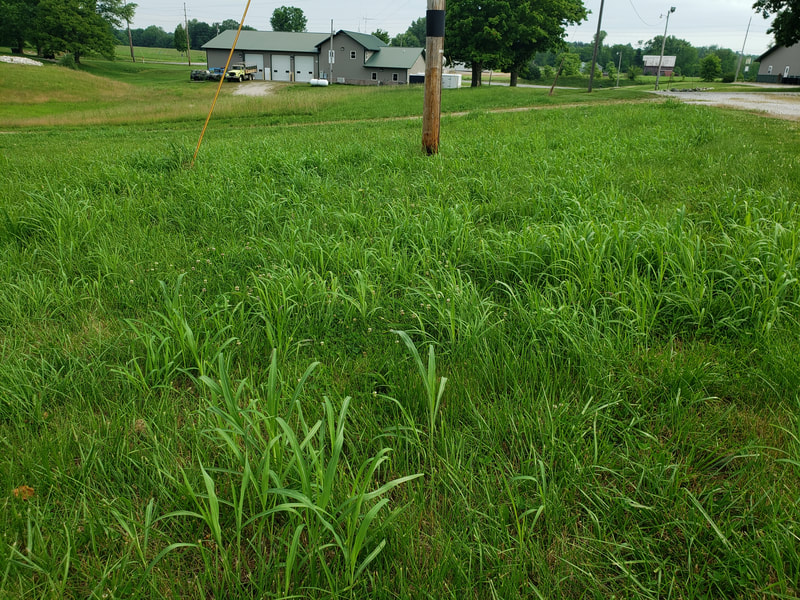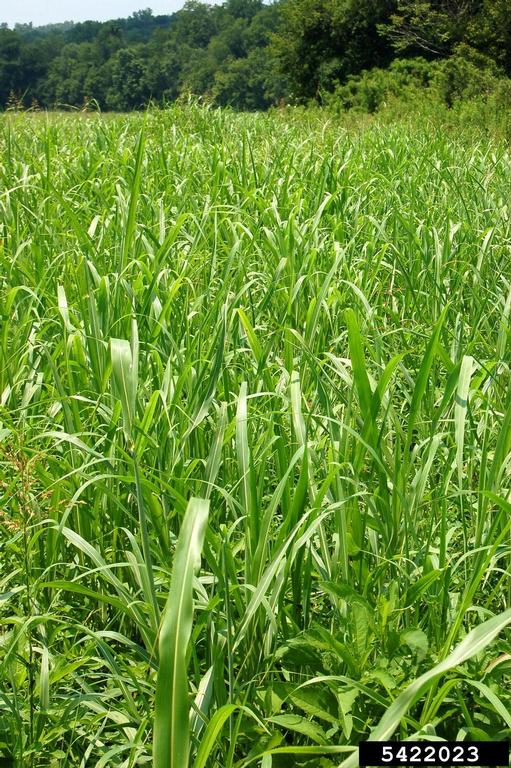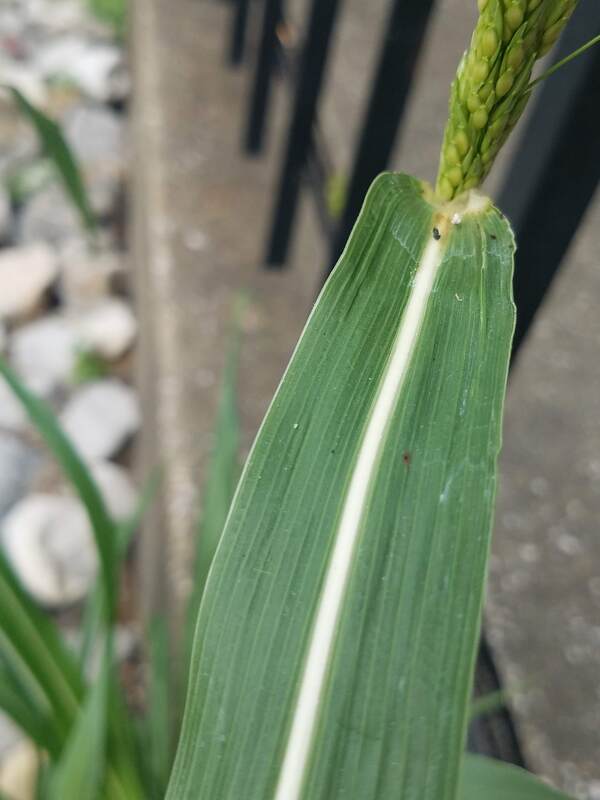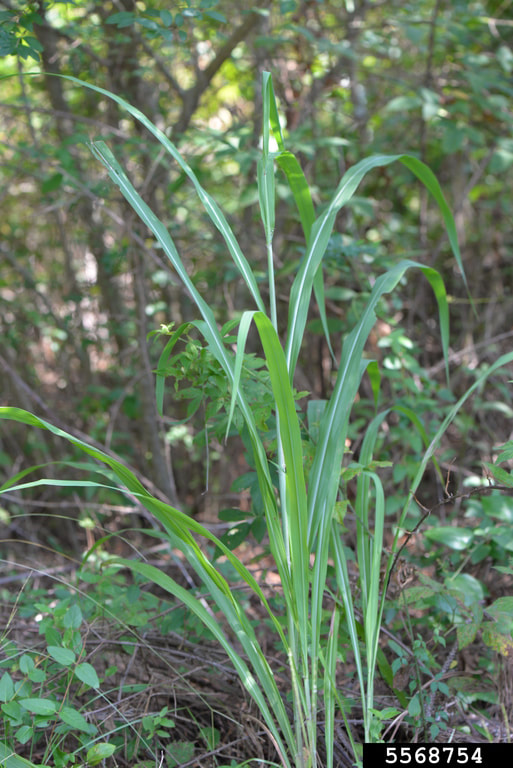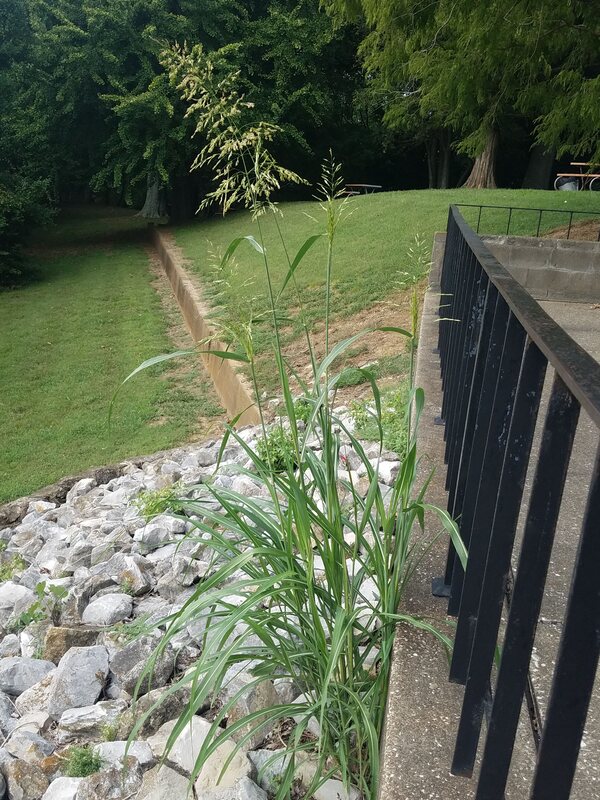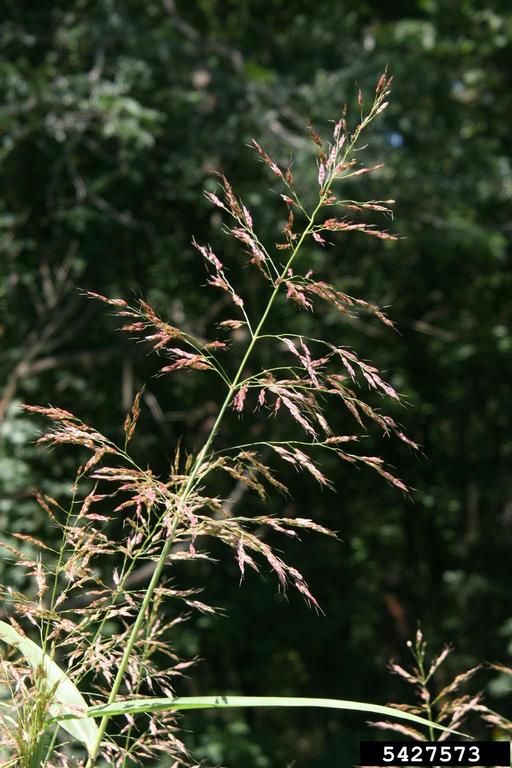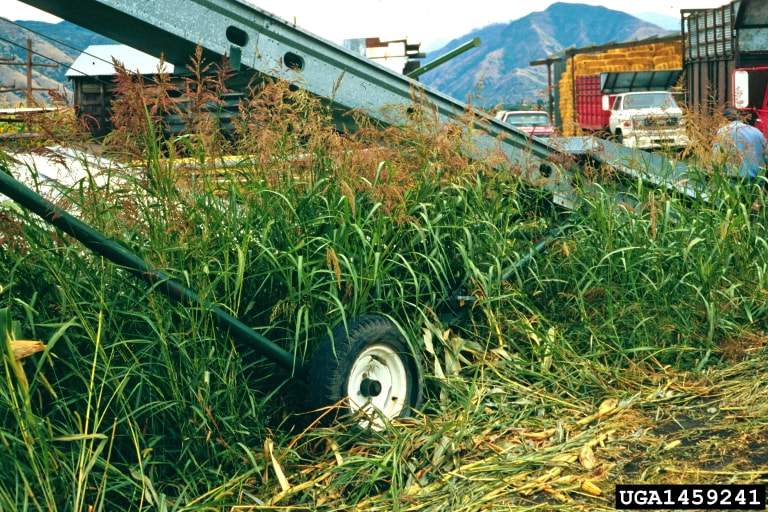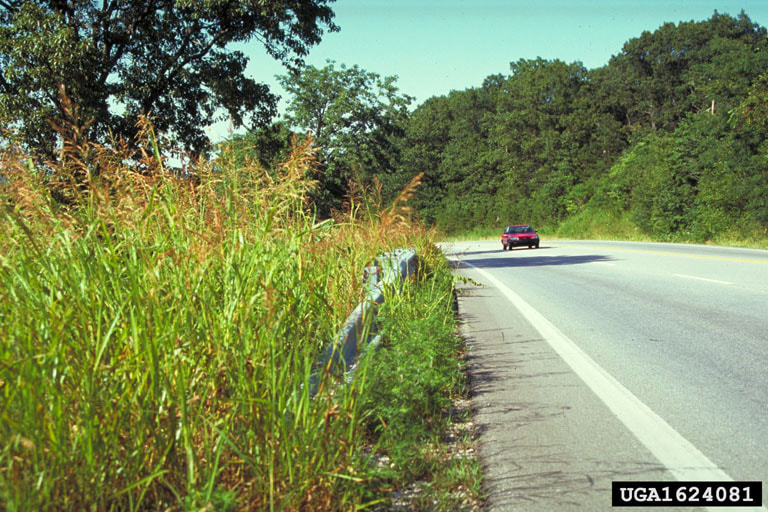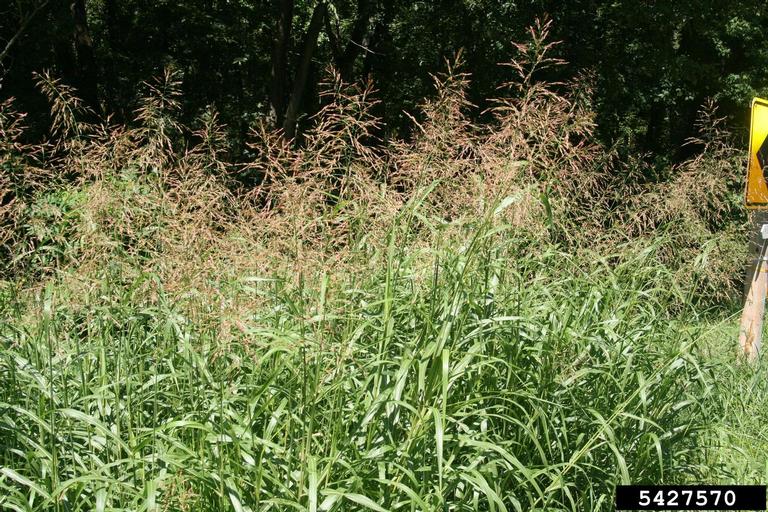Cover photo: Steve Dewey, Utah State University, Bugwood.org
Johnson Grass (Sorghum halepense)
Johnson Grass is one of the noxious weeds of most concern in Dubois County. It was once a common forage plant but is now considered a noxious weed due its aggressive spread via seeds and underground rhizomes. It is also classified as Highly Invasive by the Indiana Invasive Species Council.
Scroll down for more information on Johnson Grass. Or click here to learn more about Indiana Noxious Weeds.
Scroll down for more information on Johnson Grass. Or click here to learn more about Indiana Noxious Weeds.
|
Johnson Grass Widely planted for forage, now a noxious weed! Johnson Grass (Sorghum halepense) was once a common forage plant, but is now considered a noxious weed due to its aggressive spread via seeds and underground rhizomes. Landowners are responsible for controlling noxious weeds on their property. Johnson Grass grows up to eight feet tall, has long leaves with a distinctive white midrib, and produces large pyramid-shaped flower panicles that are loosely formed and often purplish in color. Young plants can resemble young corn plants, and it can also hybridize with commercial sorghum cultivars. While healthy Johnson Grass plants can provide good forage, when stressed by frost, drought, or other factors, Johnson Grass can produce toxic amounts of hydrocyanic acid, as well as toxic nitrates. Both mowing and intense grazing can suppress Johnson Grass and decrease seed production, but are unlikely to fully control established plants. Herbicide is generally the most effective control option, but as with other weeds timing is important. Johnson Grass is best controlled when plants are young up to the early flowering stage which typically occurs in late June. Herbicide applied once plants have produced seed is not effective in controlling seeds, although it may reduce vegetative growth. For more information on identifying and controlling Johnson Grass, scroll down to view pictures and handouts. You can also contact Ken Eck (Purdue Extension Dubois County) at 812-482-1782. Residents of Dubois, Daviess, and Martin counties can also receive free technical assistance, including site visits to their property, by emailing [email protected] or calling 812-482-1171 x3. |
Young Johnson Grass can resemble young corn plants.
Photo credit: Howard F Schwartz, Colorado State University, Bugwood.org Johnson Grass produces large pyramid-shaped flower panicles that are loosely formed and often purplish in color.
Photo credit: Charles T Bryson, USDA Agricultural Research Service, Bugwood.org |
Browse Johnson Grass Photos
Johnson Grass ID & Control Handouts
Johnson Grass Videos
Here are some useful videos from other states that may help you with Johnson Grass ID and control information. Keep in mind that other states may not have the same regulations on Johnson Grass as Indiana.
|
Video 1:
Johnsongrass: Forage or Weed? An overview of Johnsongrass ID, control, and forage considerations from Oklahoma University Extension Video 2:
JohnsonGrass: Potential Pasture Poison? - From the University of Missouri Integrated Pest Management Town Hall Series. This video gives an overview of Johnson Grass control measures, and then has a Q&A with experts about Johnson Grass toxicity, control questions, and grazing details. |
